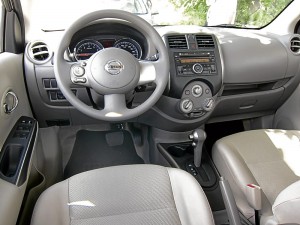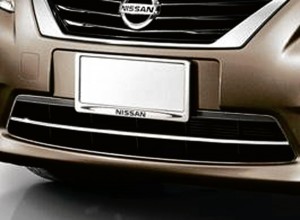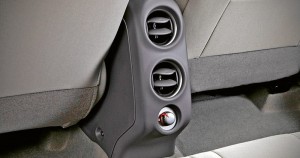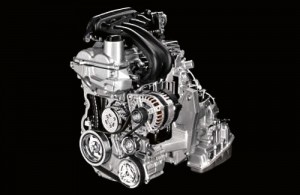Little big car is Nissan’s B-segment bet

The sweet spot of the Philippine car market has moved to a smaller class of vehicle—the B-segment is currently where demand is strongest. Nissan, which had occasion to lord it over the C and D classes of the car market in the recent past, is now launching a completely new vehicle to compete in this hotly contested category.
Its weapon of choice: the larger, roomier Nissan Almera sedan. The Almera is slotting into the B category, but it contains features and conveniences normally reserved for vehicles a class or two above it.
To begin with, the Almera may have the same footprint as other subcompacts, but it has been able to maximize the passenger space within that. Nissan stretched the Almera’s wheelbase to 2600 mm, the longest in its class and matching that of some cars in the class above, notably the Toyota Corolla Altis. Nissan has favorably compared the rear-seat kneeroom to that of C- and even D-segment sedans. The roofline is tall and boxy, to give more headroom to both front and rear passengers. The sedan measures 4425 mm long and 1695 mm wide.

For those wondering if the passenger space has been expanded at the cost of luggage room, don’t fret—the Almera packs a large trunk as well. It’s capable of swallowing 490 liters of cargo. Several large suitcases would fit into the deep and long space.
The visibly larger Almera follows the current jellybean shape favored by Japanese subcompacts: a bulbous silhouette with large headlamps and tail lamps. Standard features for the Mid-AT variant are the rear spoiler and fog lamps. Available enhancements will be leather seats and various chromed bodywork bits.
The interior is modern and airy, with large door openings and a light beige color scheme. The gauges are straightforward indicators, with the higher spec models getting luminescent dials and needles. One feature unique to this class is the Almera’s rear comfort fan, a system complete with its own control.

With the wheels pushed out to the corners, the Almera enjoys another benefit: improvement in handling. The Almera may not be the type of vehicle that one would think of enjoying on a twisty road, but Nissan also made an effort to give the Almera decent handling. Bumps and potholes are handily absorbed by the MacPherson strut front/torsion beam rear suspension. Steering is light and effortless, thanks to the electric power steering. The system is designed to further enhance fuel economy as well as give the proper level of steering assist, whether during parking maneuvers or when the car is at speed.
With all that space, the Almera needs a suitably powerful engine, and Nissan obliges with a 1.5-liter inline-four gasoline unit. The double-overhead cam, 16-valve unit generates 99 HP and 134 Nm, enough for the 1000-kg car to accelerate and effectively overtake city traffic. The engine mates to a 5-speed manual or a 4-speed automatic.
Nissan Motor Philippines has made the noteworthy decision to assemble the Almera at its Sta. Rosa, Laguna, plant, potentially creating new jobs and market opportunity for local

suppliers.
The Almera is an entry in Thailand’s eco-car category, where it will be a rival to the likes of the Mitsubishi Mirage. Nissan tweaked that formula, installing a bigger 1.5-liter engine and including more standard features. Nissan’s strategy will be to compete with a larger car within the class, which will, by designation, be mostly subcompact. By making their offering bigger on the inside, with the expected Nissan attention to detail and quality, the Almera is a strong contender in what is now the largest segment of the market.
